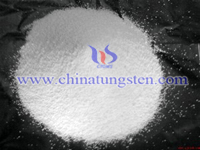Ammonium Paratungstate Hydrates and Ammonium Paratungstate Decahydrate
- Details
- Category: Tungsten Information
- Published on Tuesday, 15 December 2015 13:56
- Written by xinyi
- Hits: 295
| Tungsten Supplier: Chinatungsten Online www.chinatungsten.com | Tel.: 86 592 5129696; Fax: 86 592 5129797;Email:sales@chinatungsten.com |
| Tungsten News & Prices, 3G Version: http://3g.chinatungsten.com | Molybdenum News & Molybdenum Price: http://news.molybdenum.com.cn |
Thermal Decomposition Process of Ammonium Paratungstate
- Details
- Category: Tungsten Information
- Published on Tuesday, 15 December 2015 11:46
- Written by xinyi
- Hits: 263
| Tungsten Supplier: Chinatungsten Online www.chinatungsten.com | Tel.: 86 592 5129696; Fax: 86 592 5129797;Email:sales@chinatungsten.com |
| Tungsten News & Prices, 3G Version: http://3g.chinatungsten.com | Molybdenum News & Molybdenum Price: http://news.molybdenum.com.cn |
Tungsten Carbide Ball V-shaped Groove Grinding Process
- Details
- Category: Tungsten Information
- Published on Monday, 14 December 2015 17:14
- Written by xiaobin
- Hits: 275
The specific requirements of each procedure of tungsten carbide polished ball as follow: Coarse grinding at the beginning, machined by vertical steel ball machine and uses 100# diamond resin grinding wheel (grain size is 100). Before the grinding, the grinding wheel to be ball milled with the corresponding specifications of the groove. In addition, the groove depth is generally equal to 1/5-1/3 of tungsten carbide polished ball and runout groove should ensure that within 0.03mm.
Then the fine grinding, which also machined on vertical steel ball grinding machine and uses 150# diamond grinding wheel (the grain size is 150, finer suitable for fine grinding). It is similar to coarse grinding, the grinding wheel to be ball milled with the corresponding specifications of the groove. The groove depth is generally equal to 1/5-1/3 of tungsten carbide polished ball and runout groove should ensure that within 0.03mm.
The next is coarse pestle, which uses grinding plate for machining on vertical steel ball machine. The lower grinding plate opening 90 ° symmetrical V-groove, milled plate installation alignment groove runout less than 0.02mm. Before the grinding, the groove should be pre-grinding by the standard ball, which adopts concentration 30% grinding fluid and 140/170# SiC (grain size is 140/170) as grinding compound. Disposable add a little abrasive, with a smaller flow, pressure control in 4KN-6KN, speed 25-30r / min, grinding to a balance of + 0.03mm-0.04mm, 0.001mm in control of roundness, approved changes in diameter assurance within 0.002mm, the surface roughness of less than Ra0.4.
| Tungsten Carbide Supplier: Chinatungsten Online tungsten-carbide.com.cn | Tel.: 86 592 5129696; Fax: 86 592 5129797;Email:sales@chinatungsten.com |
| Tungsten News&Tungsten Prices, 3G Version: http://3g.chinatungsten.com | Molybdenum News & Molybdenum Price: http://news.molybdenum.com.cn |
Tungsten Carbide Ball V-shaped Groove Grinding Process II
- Details
- Category: Tungsten Information
- Published on Monday, 14 December 2015 17:16
- Written by xiaobin
- Hits: 275
After coarse pestle, it should be fine pestle on vertical steel ball machine. It uses grinding plate as grinding tool and the lower grinding plate opening 90 ° symmetrical V-groove, milled plate installation alignment groove runout less than 0.02mm, which groove also should be pre-grinding by standard ball to ensure the precision.
Afterwards, tungsten carbide ball should be polished by vertical lathe and uses oak plate as grinding tool to turn arc groove with 0.5R. It has grooved boards with four claw chuck clamping, alignment grooves within 0.1mm, with W5 / W7 diamond paste (Old GB model, or about 4000 mesh / 3000 mesh) as a polishing paste, applied to certain pressure on the grinding plate does not move, speed control in 60r / min, the polishing process can be carried out for 4-6 hours, making the ball appear like a mirror.
Finally, cooling tungsten carbide polished ball about 5min. Then use kerosene to remove the stains on the surface and wipe out by clean cloth. Testing and packaging: The amount of change in the diameter of the grant requested diameter ball is detected using a micrometer or ruler for detecting extremely; roundness detected; the surface roughness using observation and comparison assay. It is required soft cushion apart between the balls and the ball use soft cushion apart, to prevent the collision of the balls and the ball, so that it is deformed or worn.

| Tungsten Carbide Supplier: Chinatungsten Online tungsten-carbide.com.cn | Tel.: 86 592 5129696; Fax: 86 592 5129797;Email:sales@chinatungsten.com |
| Tungsten News&Tungsten Prices, 3G Version: http://3g.chinatungsten.com | Molybdenum News & Molybdenum Price: http://news.molybdenum.com.cn |
Reduction of Ammonium Paratungstate Generated during Hydrometallurgical Processing of Tungsten-Copper Borings
- Details
- Category: Tungsten Information
- Published on Monday, 14 December 2015 11:55
- Written by xinyi
- Hits: 290
Reduction of Ammonium Paratungstate Generated during Hydrometallurgical Processing of Tungsten-Copper Borings
Tungsten-copper (W-Cu) alloy is employed for manufacturing heavy duty contactors, relays,switches etc. During production of such components, W-Cu turnings/borings are generated. At CSIR-NML, a process for recovering tungsten and copper from tungsten-copper borings containing 46.01% W, 53.78% Cu, 0.13% Fe and other minor metals as high purity tungsten powder and copper powder has been developed. In the present work, a detailed investigation on reduction of ammonium paratungstate (APT) having purity 99.95% by hydrogen gas to produce high purity tungsten powder is presented. The various process parameters such as temperature, time and flow rate of hydrogen gas have been optimized. At the temperature of 800°C and 0.1 l pm flow rate a reduction of 77.78% was observed up to 2h time. At 900°C, with increase in flow rate from 0.1 l pm to 0.3lpm the increase in reduction was found to be from 63.88% to 99.99% at 1h time.At still high temperature of 1000°C, almost complete reduction was obtained at 0.1 l pm flow rate in 1h time. The effect of bed-depth was also carried out. At all temperatures chemical reaction was the rate determining step.

| Tungsten Supplier: Chinatungsten Online www.chinatungsten.com | Tel.: 86 592 5129696; Fax: 86 592 5129797;Email:sales@chinatungsten.com |
| Tungsten News & Prices, 3G Version: http://3g.chinatungsten.com | Molybdenum News & Molybdenum Price: http://news.molybdenum.com.cn |





 sales@chinatungsten.com
sales@chinatungsten.com